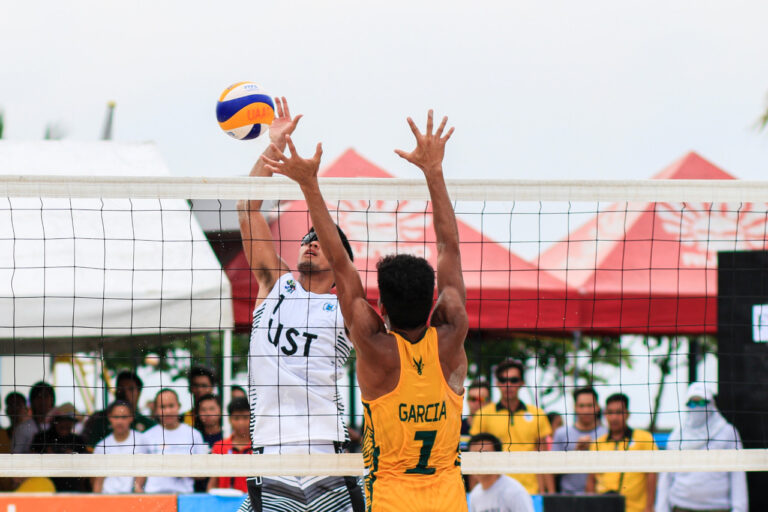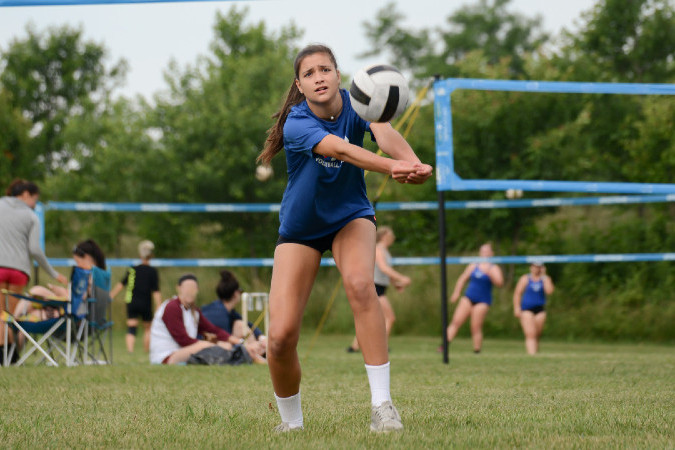The Secret Key to Volleyball Success: Mastering Eye Work and Reading Opponents
Read Your Opponents, Not the Ball
One of the major differences between a novice and an expert is knowing what to look for and why. When people don’t focus specifically on something, they don’t notice it.
Training a player’s eye work is critical for improving their ability to “read” a play and anticipate.
Novice volleyball players are usually watching the moving volleyball. Coaches should be training their players to read the situation and the opposing players’ body language.
Situation – Amount of touches left. General velocity of the ball, height, distance, and spin.
Opponent – Which person is taking an action on the ball? Is there a chance the ball could come over now, and how? What angle is the hitter approaching from? What habits and patterns do they have?


What Should Players Be Looking At During A Volleyball Game?
SERVING
-
- Referee
-
As the server, move to behind the back line – knowing that your teammates will get the volleyball to you. Get eyes on the referee to anticipate the pace of their whistle.
-
- Serve Receive Formation
-
Second, look across the net – how are the opponent’s serve receivers set up? Is there a large seam or open space on the court?
-
- Individual Passers
-
Which of the serve receivers is the weakest? Is there a passer who doesn’t look back at you, or looks like they don’t want the ball? Is one of the passers going to transition to hit?
SERVE RECEIVING
-
- Server
-
Get your eyes on the server as soon as they have the ball in their hands. See which direction their hips and shoulders are facing, and notice where their eyes are looking. Be vocal with your teammates about which type of serve to expect based on server habits and body language.
-
- Referee
-
Quickly glance at the referee to be aware of their tempo. Keep your ears open. Be vocal to your teammates if it is a quick whistle.
-
- Server
-
Watch where the server tosses the ball in relation to their body. Watch the angle of the arm swing (whether it is a float or topspin). See the angle that their hand contacts the ball. Recognize how much force is behind the ball.
-
- Ball
Pick up the ball (with your eyes) right out of their serving hand. Move laterally toward the ball’s location right after contact. Before it crosses the net, judge the serve’s depth and move forward or backward accordingly. See your teammates’ movements in your peripheral vision and adjust/communicate. Track the ball with your eyes all the way to your platform (don’t take your eyes off the ball).
SETTING
-
- Hitters
-
Before the serve, make eye contact with each of your hitters and communicate what type of set they should expect.
-
- Passers
-
Glance at your passers and know who is passing from where.
-
- Server
-
If you are in serve receive, watch the server. Notice which way their hips and shoulders are facing; see where their eyes are looking across the net.
-
- Passer
-
Once the server contacts the ball, figure out its general end location (before it crosses the net) and get eyes on which of your receivers is passing.
-
- Platform
-
Look at the receiver’s platform – do they look strong and confident? Watch their platform and anticipate where the ball will go. Being ready with a quick first step.
HITTING
-
- Platform
-
Transition to behind the 10′ line while keeping an eye on the pass, staying ready to help out on a bad pass.
-
- Setter Angle
-
Notice if the pass pulls the setter off the net. Adjust your positioning to maintain a consistent angle with the setter.
-
- Ball
-
Track the ball out of your setter’s hands. Use your peripheral vision to see blockers and defenders. As you swing, see your hand contact over the top of the ball.
BLOCKING
-
- Platform
-
Watch the passer’s platform, first anticipating an overpass. Communicate with teammates if the pass is in- or out-of-system.
-
- Setter
-
Based on the pass location, track the setter and decide what their setting options are (based on their skill level and habits). Anticipate the setter dump and be vocal to discourage it. Watch their upper body (shoulders, arms) for signals of the set location.
-
- Ball
-
See the general location of the set.
-
- Hitter
-
As soon as possible, find who will be hitting the ball. Pick up their line of approach and tempo into the ball. Watch their upper body to determine their hitting angle. Seeing an elbow drop means it is off-speed.
-
- Ball
-
Keep your eyes open while blocking and see the ball into your hands.
DEFENDING
-
- Passer
-
Watch the passer, first anticipating an overpass.
-
- Setter
-
Based on the pass location, track the setter and analyze what their setting options are (based on their skill level and habits). Anticipate the setter dump and be vocal with your blockers. Watch their upper body (shoulders, arms) for signals of the set location.
-
- Ball
-
See the general location of the set. Move to your assigned defensive position.
-
- Hitter
-
As soon as possible, find the hitter. Pick up their line of approach and hitting tempo. Watch their upper body to determine hitting angle and if it is off speed.
-
- Ball
-
Track the volleyball out of their hand. See the ball to your platform.
BETWEEN RALLIES
-
- Teammates
-
Look at your teammates. Give them your confidence and energy.
-
- Coach
-
Glance at your coach to see if they need to communicate with you.
-
- Self
-
Look at yourself. Give yourself confidence and energy. Reset your emotions and focus on the next point.
